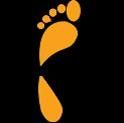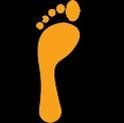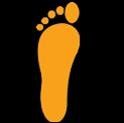Run - Run - Run
- By Robert Scott Steinberg DPM
- •
- 14 Aug, 2018
- •
People run for many different reasons. For some, it gives them a positive energy boost, and it’s an ideal way to keep their weight in check. For others, it’s the buzz of competition, or quite simply, because they enjoy it. One of the first steps to healthy running is wearing supportive running shoes. Neglecting to wear proper footwear can lead to a variety of foot problems that can cause injury and impede performance.
To find the best running shoe, you must first determine your foot type. Are you a pronator, a supinator, or do you have neutral feet? Pronators have relatively flat feet and rolled in ankles (as observed when standing), leading to overpronation (gait in which the ankle rolls inward excessively). Supinators have high arches, leading to underpronation and rolled out ankles (gait in which too much weight is placed on the outside of the feet). And finally, if you have neutral feet, you have a foot that is in-between a flat-foot and high arch. These 3 different foot types directly affect knee alignment. Supinated and pronated feet place a “twist” in the knee joint can causing mal-tracking of the knee cap (patella).
Dr. Robert Steinberg will perform a gait analysis and provide suggestions about the best running shoe for your foot type. Through his analysis of your gait, he will also determine if a pair of prescription functional foot orthotics will improve the efficiency of your running and walking, better protect you from overuse injuries, and address pain you might be having in your foot, ankle, shin, or knee.



Follow these basic guidelines for successful running shoe shopping:
- Have your feet measured while you’re standing
- Always try on both shoes and test your running shoes while still in the store
- Shop for shoes later in the day; feet tend to swell during the day
- Buy shoes that don’t pinch your toes, either at the tips, the toe box
- Wear or buy the socks you’ll wear when you run
- If you wear orthotics, bring them. You need to see how the shoe fits with the orthotic inside.
- People who are pronators (low/flat arch) should choose a supportive shoe designed for stability and motion control. These shoes help to correct for overpronation.
- People who have a neutral arch should choose a shoe with equal amounts of stability and cushioning to help absorb shock
- People who are supinators (high arch) should choose a cushioned running shoe with a softer midsole and more flexibility. These features will compensate for the poor shock absorption of a high-arched foot.
People with supinated or pronated feet can greatly improve their support with prescription orthotics. Long distance runners can prevent many of the more common overuse injuries (heel pain, ankle and knee pain, and shin splints) with they use of prescription orthotics.
If you suffer from bunions, finding the right running shoe may be a little tricky, but it can be done. Look for shoes that provide soft mesh at the sides for more comfort and cushioning, a wide toe box, and a snug heel for stability.
For assistance in determining your foot type, give our Schaumburg podiatry office a call and set up and appointment. Dr. Steinberg is a long time runner, and this gives him a very special insight into the problems facing runners and walkers.
Looking for a pair of running shoes that fit your feet? Dr. Steinberg can give you recommendations.
References
- Sheldon H. Nadal, DPM. “Jogging and Running.” Accessed February 4, 2013.
www.footcare.net/library/1882/JoggingandRunning.html. - The Running Advisor. “How to Choose A Running Shoe.” Accessed February 4, 2013.
www.therunningadvisor.com/running_shoes.html. - APMA FootPrints Newsletter Spring 2013
